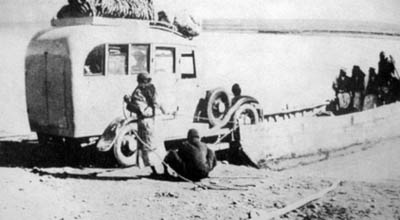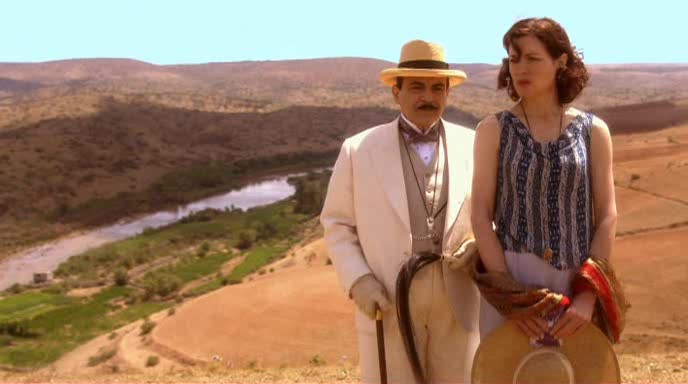Christie’s picnic at Kawkab in Syria was indelible because the dessert was in bloom. During an archeological dig in 1934 (?), Christie and Max Mallowan* packed a lorry named Queen Mary for sightseeing at Kawkab, a hill about 300 meters high. They expected an easy climb, but it was slippery and steep, and at the summit, they ate on the edge of a small crater overlooking a vista filled with flowers. Christie was enthralled and remembered the moment precisely in her memoir Come, Tell Me How You Live (1946). “There are flowers here in quantity, and it is a lovely moment,” she writes, “a marvelous view all around, with the hills of the Jebel Sinjar not far away. The utter peace is wonderful. A great wave of happiness surges over me, and I realize how much I love this country, and how complete and satisfying this life is . . . .” 
A desert picnic on the road to Petra in Appointment with Death is awful. Instead of relying on the joyous moment a Kawkab, Christie describes and a group of uneasy characters suffering from heat and boring conversation. At noon when the party stops for lunch, they tend to be silent and irritable: “The irritation of a hot day of being boxed up closely with three other human beings had got a little on everyone’s nerves.” The lunch is incorporated into Ashley Pearce’s Appointment with Death. (2010) without any picnic details.
Ashley Pearce’s adaptation Appointment with Death (2010) provides a clear image of the desert landscape, but what was served at the picnic lunch is the greatest mystery of the novel.
*Max Mallowan, fourteen years, Christie’s junior, was the love of her life. She accompanied him on various archeological digs in the Middle East.
See Agatha Christie Mallowan. Come, Tell Me How You Live. London: William Collins, 1946. Reprint, 1999; Ashley Pearce. Agatha Christie: Poirot: Appointment with Death (Series 11, 2010). Screenplay by Guy Andrews based on Agatha Christie’s novel (1938), ITV Studios, WGBH. Hercule Poirot (David Suchet) and Sarah King (Christina Cole) at the sightseeing picnic on a dig in Syria

